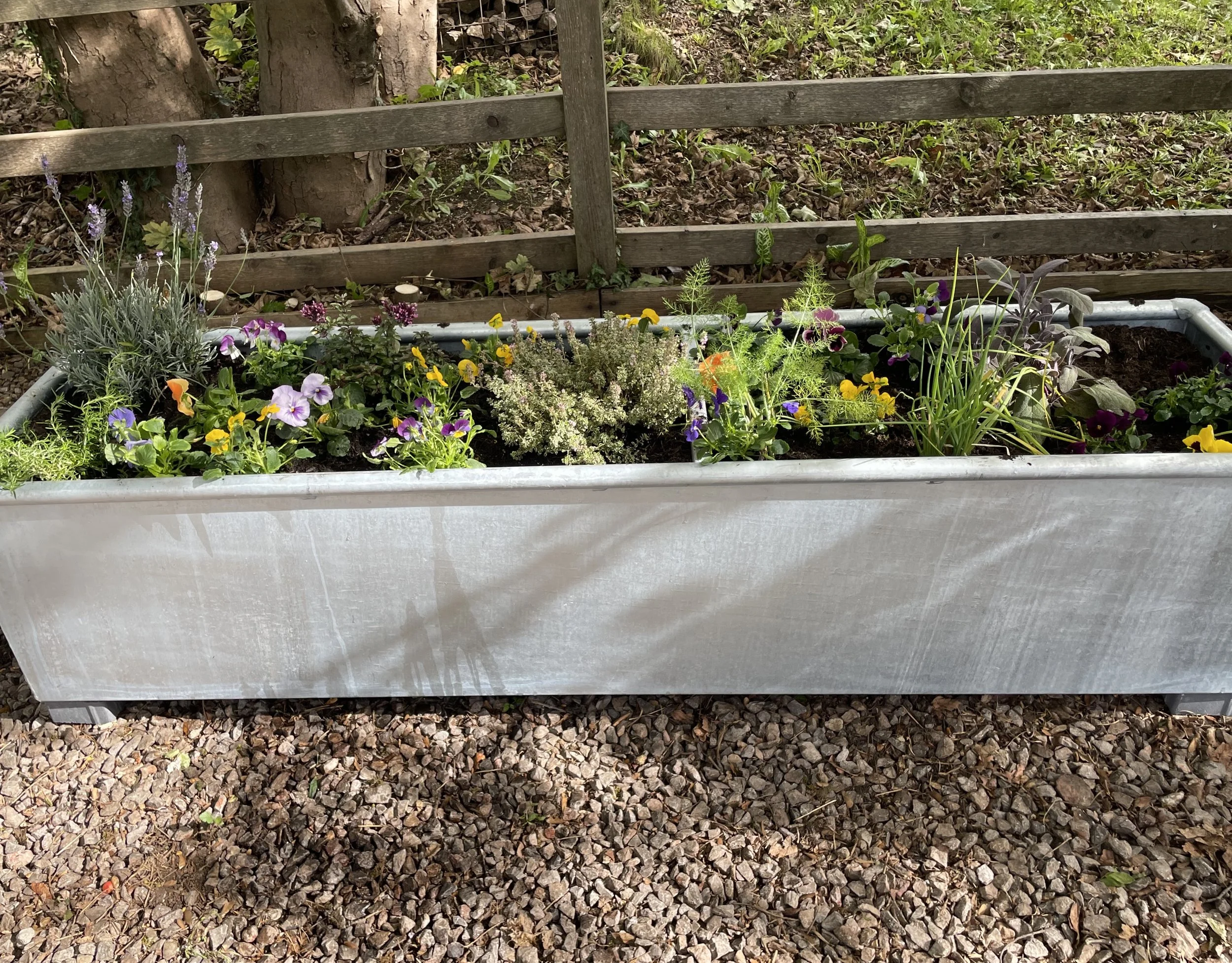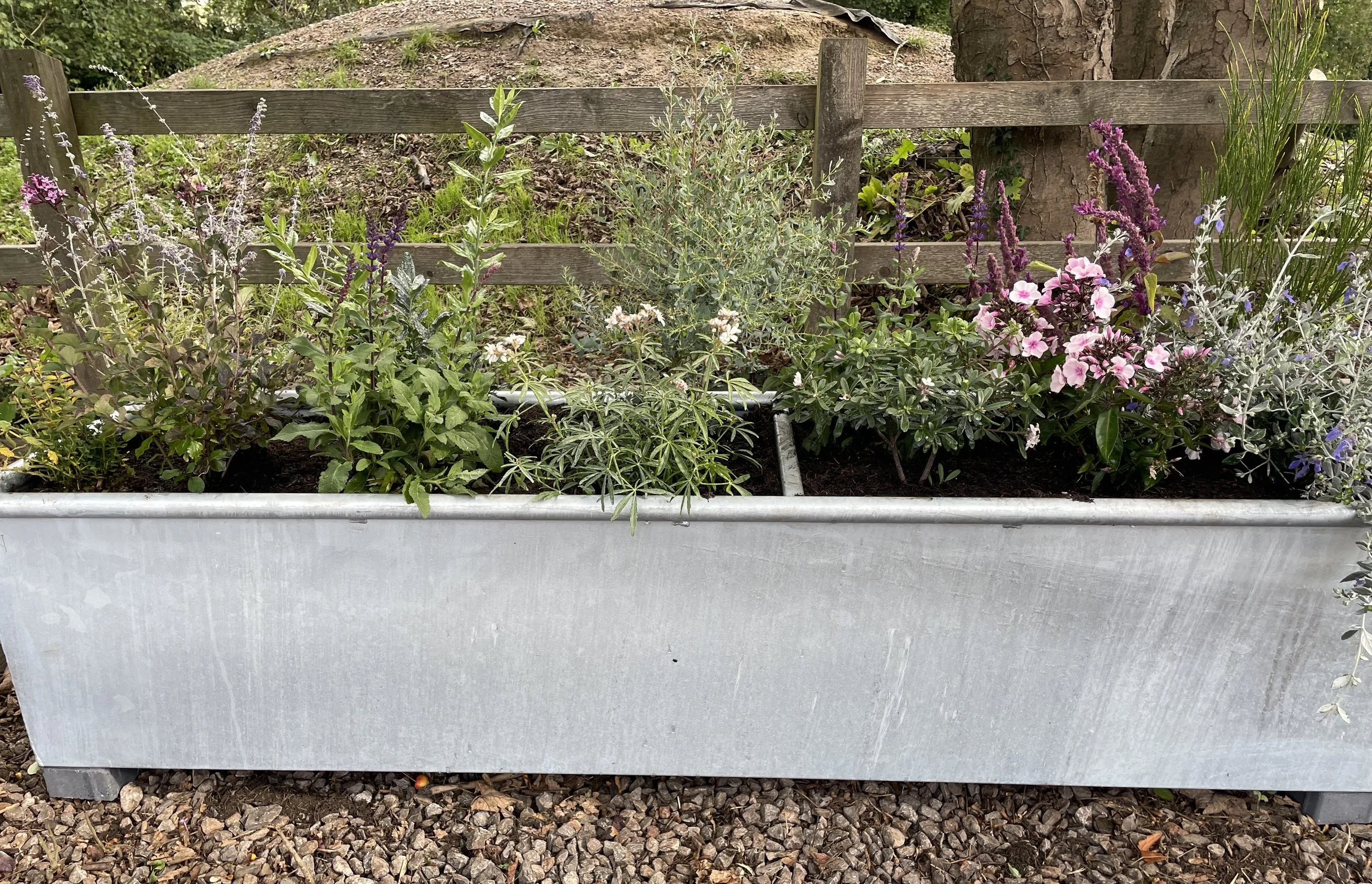
Dragon’s Lair
Welcome into the Secret Tunnel which is known locally as The Dragon's Lair.
The entrance to the Lair is surrounded by sweet smelling laurel whose flowers keep the bees happy into autumn and the birds with its berries for food.
Legend has it that the Dragon of Nunney, fondly called Sam, was just a tiny egg when Sir John Delamare, who built Nunney Castle in 1373, found it during the Hundred Years War whilst he was abroad. You can visit Sir John's sarcophagus in All Saint's Church, just down the hill from here.
No one can say for sure why Sam was so petite, but we know she grew up happy, swimming in the Castle moat protecting the ducklings and breathing hot fire into the thick stone walls of the Castle and surrounding houses on cold winter nights.
Sam recently died of natural causes - she was nearly 700 years old! We miss our tiny dragon dearly, but you can help make her legacy stronger, and much bigger, by adding to her bones.
Please will you paint a decent sized rock that you find somewhere here within the Old Quarry Gardens and bring it back to make Sam's bones big and strong?
The Fairies of Nunney Never Never Land have since moved in to Sam's Lair and they are honoured to look after her bones and watch them grow! They would love some new ones to protect, but whatever you do, don't touch them once you've placed them down, they are now under the protection of the fairies.
Sight
Sight is one of the most complex senses. The eyes and brain work in tandem with nerves to process depth, light, colour and imagery. Sight is another way of taking in data to inform how we perceive the world to make decisions about our environment, our movement, and our social interactions.
Sound
The sense of sound is possibly one of our more complex senses and operates largely on vibrations. Not the Om kind, but through our body’s ability to interpret sound waves through the ear and our nervous system operated by, you guessed it, our brains! There are very tiny bones in the middle of the ear that help not only to hear, but also to keep our equilibrium, our balance, and to help us maintain awareness of our environment as well as communicate.
Taste
The sense of taste is specific to the sensation detected by our taste buds of the five basic tastes of sweet, sour, salty, bitter and umami. Taste is important because it allows us to determine if food is safe to eat. Also, maybe less true in today’s world of fast and overly processed food, it has historically enabled us to distinguish whether something is nutritious and will provide our bodies with the sustenance it requires to thrive.
Smell
The sense of smell is powerful – some say the most powerful sense we have as it is strongly linked to our emotions and memory. It works by detecting odours that are picked up by tiny sensory cells in your mouth and nose. Your brain then interprets the incoming data and links it to hazards, memories, emotions, food and many other things.
Touch
Touch allows us to perceive the world through direct skin contact that delivers information to the brain such as pain, pressure and vibration. These notifications allow us to make choices about our emotions and safety. Touch enables us to interact with our environment and develop emotional bonds. Our nerves in the skin are connected to proprioceptors in our muscles and joints which enable us to maintain body awareness that allows for mobility and coordination. The earliest days of our human cognitive and emotional development are based on sensing the world through touch.





